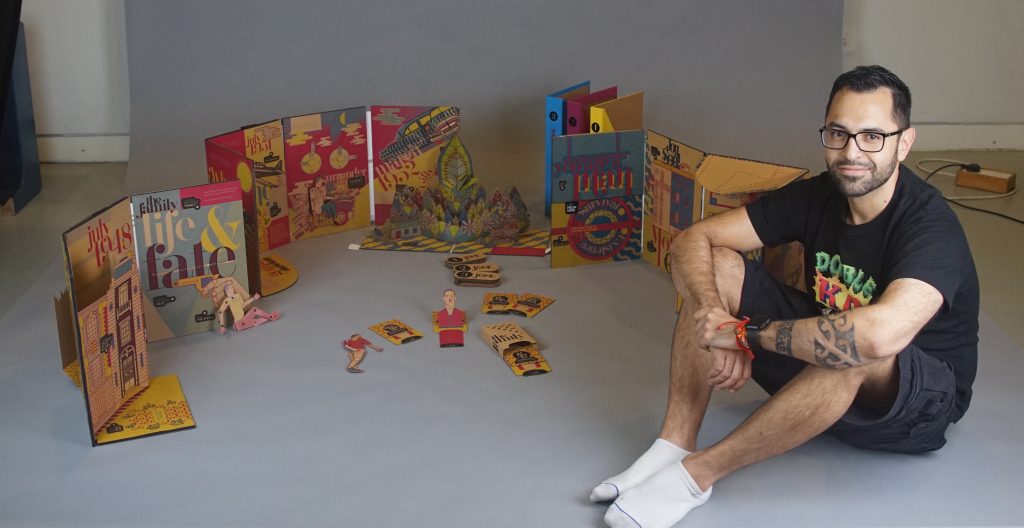Letters to José: An Interactive Non-linear Multimodal Hybrid Narrative
Letters to José is an interactive non-linear narrative inspired by a compilation of 27 letters written between 1948 and 1957 by Jesús –a young medical student– and José –Jesús brother and soon-to-be air force recruit. The letters are not only a first-person account of personal events, but a record of the social, cultural, and economic changes of Colombia during the first half of the 20th century. In its physical/digital hybrid form of playable story, the letters were transformed into three interactive, multimodal, unfolding paper-worlds that combine unique paper mechanisms with different visual, performative, and auditory modes to produce and move forward in the story. Each paper- world is divided into separate panels which are both the interface and the stage where the story unveils. In these stages, the experiencer can play with a cardboard puppet, manipulate a series of pop-up books to unlock hidden stories, pull strings to activate mechanisms, pull tabs to unfold events or touch and manipulate words that slowly narrate short fragments of the letters through audio and text. Because of its non-linear nature, the narrative is distributed across the panels, sometimes branching out, sometimes returning into a single storyline. Senses are stimulated through different modes: the story is told by a narrator but also read in short paragraphs integrated into the paper-world; that becomes a volume in which the experiencer can immerse.
Currently, Letters to José is a finalized work. These fully working prototypes have been tested with various users who engaged with the narrative and the different elements of the story. This experience is composed of different artifacts, as mentioned above, that move through various local ecologies –each paper-world– with the purpose of presenting the story. With this in mind, we have identified three different trajectories in this experience: the narrative trajectory which relates to unfolding narrative events, the interface trajectory which describes the cause-effect relationship of the experience, and finally the performative trajectory that relates to physical manipulation and engagement with the story.


Research and Process
Sketchbook #1: Spring 2018
Sketchbook #2: Summer – Spring 2018
Sketchbook #3: Spring 2019
Sketchbook #4: Fall 2019 -Spring 2020














































































































































































